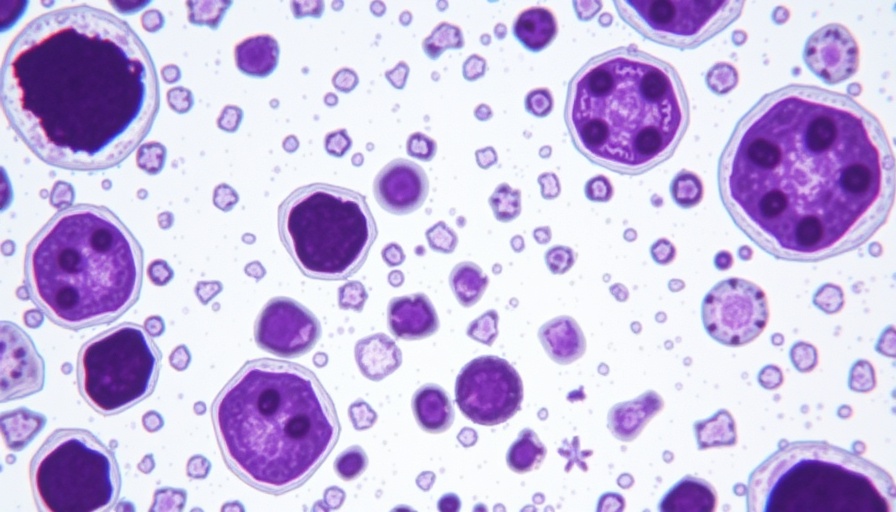
FDA's New Approval: A Game-Changer for Psoriasis
The FDA's recent greenlight of roflumilast foam represents a significant stride in the treatment of plaque psoriasis, particularly for individuals aged 12 and older. Users can now express hope for relief, as this topical formulation brings a targeted approach to alleviate symptoms associated with this chronic skin condition. Developed by Arcutis Biotherapeutics, roflumilast foam is not just another treatment option; it holds the potential to transform daily routines for thousands coping with scalp and body psoriasis.
The Mechanism Behind Roflumilast: What You Need to Know
Roflumilast is classified as a phosphodiesterase-4 (PDE4) inhibitor, a type of medication that tackles inflammation—a core issue in psoriasis. By inhibiting the PDE4 enzyme, roflumilast decreases the inflammatory response in the body, addressing the symptoms directly at the source. The 0.3% foam version has shown promising results in clinical trials, with users reporting considerable relief from itching and visible skin improvement.
Clinical Evidence: What Do the Studies Show?
In a pivotal phase 3 trial, known as ARRECTOR, 432 patients received either the foam or a placebo over eight weeks. The results were compelling—66.4% of participants using roflumilast achieved near-clear skin, compared to just 27.8% in the placebo group. Moreover, itch reduction was significant, with 65.3% reporting a clinically meaningful decrease in scalp itch. These findings reinforce the potential of roflumilast to significantly improve patients’ quality of life.
Safety and Side Effects: A Balancing Act
As with any medication, understanding side effects is crucial. The studies revealed that adverse events were rare, with headache, nausea, and nasopharyngitis being the most common among users. Rates of treatment discontinuation due to side effects were low, indicating a favorable safety profile for the foam. Nevertheless, patients with moderate-to-severe liver impairment are advised against using this treatment, which highlights the necessity for tailored healthcare approaches.
Why This Matters: The Emotional Journey of Managing Psoriasis
For many, psoriasis is more than just a skin condition; it significantly impacts daily life and mental well-being. The struggle with self-esteem and physical discomfort can be daunting. The introduction of roflumilast foam comes as an emotional beacon for those who have felt isolated by their condition. It symbolizes hope and progress in dermatological treatment, encouraging individuals to pursue available solutions.
Tomorrow’s Treatments: Looking Ahead
The approval of roflumilast foam is just the beginning. With ongoing research, there is potential for even more targeted therapies that address psoriasis and related conditions. Professionals in the medical field and individuals affected by psoriasis are left pondering: What will the future of treatment look like? This question drives innovations in dermatological health, paving the way for better management and happier lives.
Take Action: Elevate Your Health and Wellness Journey
If you or someone you know suffers from psoriasis, consider discussing the new treatment options available with a healthcare provider. Explore how roflumilast foam might fit into your or your loved one's treatment plan. Staying informed and responsible in managing health can lead to enriched quality of life—never hesitate to seek out resources that empower your wellness journey.
 Add Row
Add Row  Add
Add 




 Add Row
Add Row  Add
Add 

Write A Comment